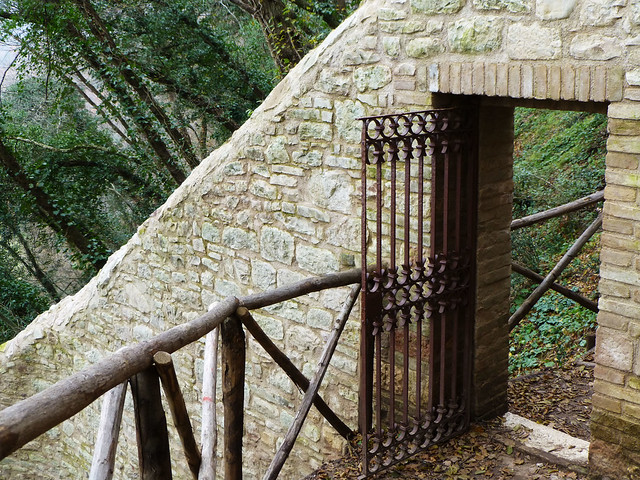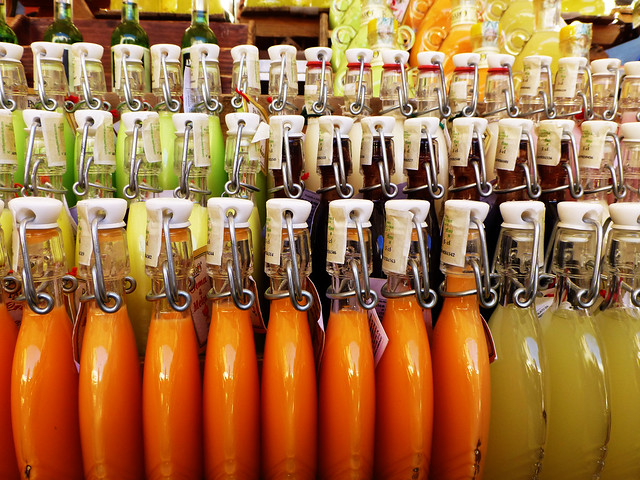Ask a Local: What Should I Do/See/Eat In Rome?
Welcome back to my Ask a Local series.
Today, in celebration of my upcoming Italy guide, I’m giving you a teeny tiny peek at what’s inside. Here’s half an interview by the lovely Elizabeth Knight of Rome…If You Want To.
Enjoy!
First tell us about you.
I am originally from Nashville and have lived in Rome for six years. In my free time here, I like to eat Italian food, bake American sweets, and visit museums and monuments with friends who come and go through my apartment’s revolving door. At least one weekend a month, I get out of town to absorb the rest of Italy—from the Alps to Sicily.
If someone is visiting Rome for the first time, what do you recommend they see or do?
Once you’ve seen all the usual suspects, I strongly suggest seeing the Basilica of San Clemente near the Colosseum. Underneath the medieval basilica, there are shockingly intact remains of a fourth-century basilica. And below that is what’s left of a first-century pagan temple and even residential dwellings.
I also strongly recommend a stroll through Trastevere, my favorite neighborhood in Rome. Winding alleys, only wide enough for a bicycle, and tightly packed ancient buildings hide funky shops and superb eateries. You’ll miss out if you stick to the typical Colosseum-Spanish Steps-Piazza Navona triangle.
If you feel confident doing so, try a scooter tour of Rome. Several companies in town organize these. It is the fastest way to get around the city and you’ll feel like Mr. or Ms. Cool with the wind in your hair. Be careful, but not scared; If I can drive one of these things, anyone can.
What neighborhoods or parts of town are best to stay in?
Anything in the historical center around Piazza Navona or the Spanish Steps is a dream if you can afford it. You can walk everywhere. Apart from that, some of the best places to eat are in Trastevere, across the river in the Jewish Ghetto, and in the Monti neighborhood near the Colosseum. So any of those would be fabulous as well.
Be careful of apartment rentals that are allegedly “fifteen minutes from downtown,” as they’re usually much farther. Get an address and map it online. And definitely avoid the area near the train station unless you are really on a student’s budget.

Let’s talk about day trips…what nearby places should everyone make sure to visit and why?
I firmly believe that Naples and Florence are not day trips from Rome. People try to do it, but it is just too far and there is too much to see there. Plus, there are loads of beauties near Rome that you can get to without spending half the day in the train. For example…
Calcata. About an hour north (by car) of Rome is a tiny village that seems to grow out of the top of a rocky hill like a mushroom. It sits practically unmodified since it was built in the middle ages. Head to Calcata with your camera for lunch at La Piazzetta, located at Via S. Giovanni 47 (order anything; it’s all delicious) and a welcome breath of fresh air.
Orvieto. An hour from Rome (by train) is Orvieto in Umbria. In the main piazza you’ll see one of the most famous cathedrals in Italy, colorfully mosaicked and constructed in striped marble. Then have an ice cream at Gelateria Pasqualetti right next door. You’ll never forget either.
Assisi. Going to Assisi from Rome is a bit of a hike—two hours by train—but once you’re there, everything to see is crowded together into an easily walkable radius. The 800-year-old Basilica of St. Francis is worth the trip alone, but the whole town is bursting with charm and views of sunflower fields around every turn.
Sperlonga. The beaches nearest to Rome tend to be crowded and, frankly, dirty. But just an hour away by train is Sperlonga, with clean, blue water and well-kept sand and plenty of lounge chairs for rent. The town is also darling with plenty of places to eat fresh seafood.
 A pretty hike from Assisi.
A pretty hike from Assisi.Tell us about the local dishes. What should people try here in Rome?
There are a couple of kinds of pasta that are quintessentially Roman: carbonara (al dente spaghetti with egg, pecorino cheese, and guanciale, which is pork cheek) and amatriciana (tomato, pecorino, and guanciale sauce often served with long bucatini pasta, resembling mini-hoses).
Then there are carciofi alla giudia, flattened whole artichokes fried as crispy as potato chips, which are a Roman Jewish tradition. Best to get these, obviously, in the Jewish Ghetto (I recommend the restaurant Nonna Betta, located at Via del Portico d’Ottavia 16). They are typically only available in late winter and spring.
Finally, Roman pizza. Unlike the famous pizza from Naples, Roman pizza has a paper-thin crust. Stay out of the way when arguments over which crust is better heat up.
 |
Did I mention that I wrote a book full of these interviews? Get 100 interviews from top chefs, wine experts, and locals all over Italy. |
What are your personal top three favorite bars and restaurants in the area?
It’s not easy to pick three. But if I must, at least two are in the same neighborhood. For pizza, my heart beats a little faster for Dar Poeta in Trastevere. You should try the mixed bruschetta appetizer with everything from spreadable sausage to honey and gorgonzola on crusty bread, a plate of steaming, chewy pizza, and finally, a nutella calzone. There’s always a long wait for a table.
Down the street, Zi’ Umberto, located at Piazza di San Giovanni della Malva 14, is a small Roman restaurant with good outdoor seating, a decadent salami and cheese plate, and superb pastas—particularly the gricia.
Across the river from Trastevere, in the Jewish Ghetto, Nonna Betta (at Via del Portico D’Ottavia 16) is the place to try fried artichokes (carciofi alla giudia) and traditional kosher lamb and fish.
Bars: Near Piazza Navona, Bar del Fico is so small that the hoards of patrons have to spill out into the square with their glasses of wine and beer. This gives them the chance to look at each other, which is good, because everyone there is gorgeous. There are always a lot of locals.
Gusto, along the river not far from Piazza di Spagna, has one of the best aperitivi in town. For ten euros you can get a fun cocktail (I get the Mediterranean Mojito with cherry tomatoes) and as many trips as you want to the very solid appetizer buffet.
The rooftop bar of the Hotel Eden is pricey, but you’re paying for the best sunset view in Rome. Especially if you’re celebrating a special occasion, you can’t beat it.

Why should people make sure to visit Rome when they come to Italy?
Rome has something for everyone. Ancient monuments and ruins, Renaissance art, churches, and food and wine for all. Plus, a small enough downtown area that you can walk to everything (this is fortunate, because the subway system is practically non-existent). Even the weather is agreeable. If you want to skip the monuments and just sit in sunny piazzas and sip things all day, that’s okay, too. There are no rules. Il dolce far nulla (the sweetness of doing nothing) is an Italian motto and way of life.
 |
Did I mention that I wrote a book full of these interviews? Get 100 interviews from top chefs, wine experts, and locals all over Italy. |

Leave a Reply